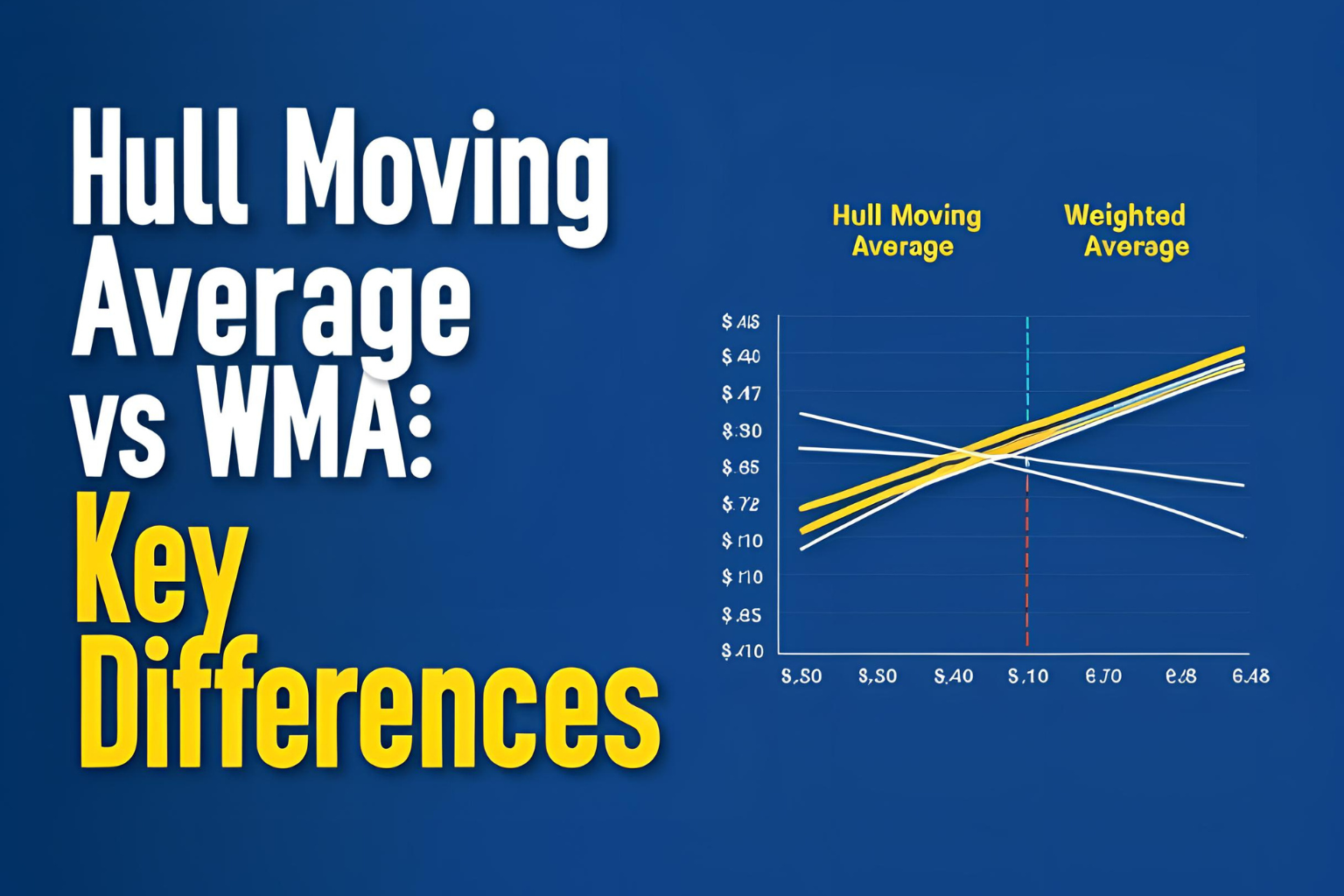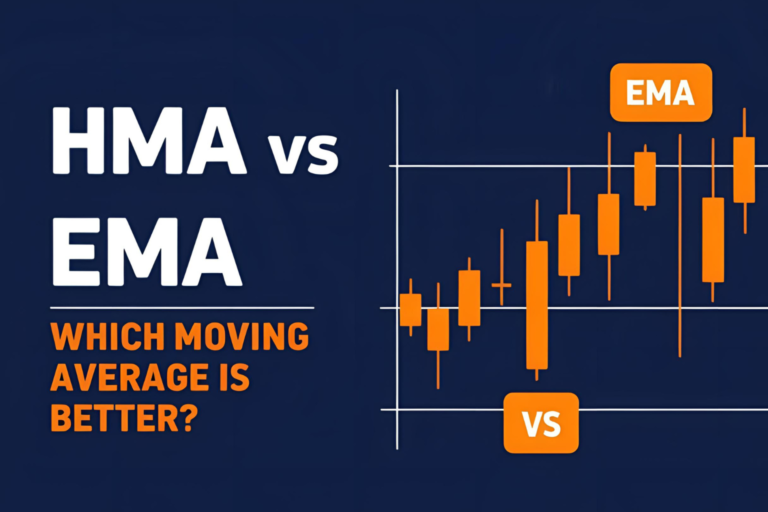Hull Moving Average vs WMA: Key Differences
Moving averages are the foundation of many trading strategies, but not all moving averages are created equal. Two closely related indicators — the Hull Moving Average (HMA) and the Weighted MovingAverage (WMA) — share a similar structure but differ in performance and application.(Hull Moving Average vs WMA)
In this post, we’ll explore the key differences between HMA and WMA to help you choose the better fit for your trading style.
What Is a Weighted Moving Average (WMA)?
The WMA assigns more weight to recent prices, making it more sensitive to current price action than a Simple Moving Average (SMA). For example, in a 10-period WMA, the most recent price gets a weight of 10, the previous one gets 9, and so on.
Learn more about WMA on Investopedia
What Is the Hull Moving Average (HMA)?
The HMA is an enhanced version of WMA designed to minimize lag and maximize smoothness. It applies a unique formula that involves multiple WMAs and a square root smoothing factor, delivering faster trend recognition with reduced noise.
Detailed breakdown available in our Hull Moving Average Formula Guide
Key Differences: HMA vs WMA
| Feature | WMA | HMA |
|---|---|---|
| Calculation Type | Single weighted average | Multiple WMAs + square root smoothing |
| Lag | Moderate | Very low |
| Smoothness | Some noise | Very smooth |
| Responsiveness | Good | Excellent |
| Customization | Simple period setting | More complex formula |
| Platform Support | Widely available | May require custom script |
Which One Should You Use?
- Use WMA if:
- You want a simple, weighted average with basic responsiveness.
- You’re working on platforms with limited custom indicator support.
- You’re building custom indicators based on price weightings.
- Use HMA if:
- You want faster, smoother signals.
- You trade trends and need clear direction with fewer false signals.
- You’re using platforms like TradingView or Thinkorswim that support custom indicators.
Real-World Example
In a backtest comparison:
- WMA provided early entries but had more false signals.
- HMA filtered out noise and gave more reliable signals during trends.
Both indicators have merit — the key is how you use them in your strategy.
Conclusion
While the WMA is a reliable step up from the SMA, the Hull Moving Average goes even further. If your trading demands precision, speed, and smooth trend identification, the HMA is the superior tool.
But remember — the best moving average is the one that complements your trading system.
FAQs
1. Is the Hull Moving Average just a modified WMA?
Yes, it’s built using WMA as a base, but with extra steps that improve smoothness and reduce lag.
2. Which one is better for intraday trading?
HMA is usually better due to its responsiveness and clarity.
3. Do all platforms support HMA?
No, you might need to import or script it manually depending on the platform.
4. Can WMA and HMA be used together?
Yes, some traders use WMA for signal confirmation and HMA for trend direction.
5. Does WMA work better for shorter or longer periods?
WMA is more effective in shorter timeframes where recent prices are more significant.

